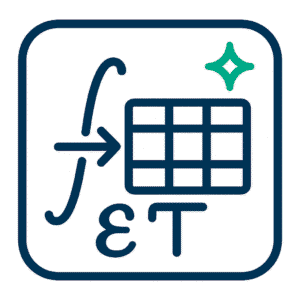Definitions and formal roles
The Laplace transform maps a time-domain function into a complex-frequency representation F(s), where s = σ + iω. The canonical definition is an integral from 0 to ∞, which makes it a unilateral transform frequently used for causal systems and initial-value problems. “In mathematics, the Laplace transform, named after Pierre-Simon Laplace, is an integral transform that converts a function of a real variable (usually t, in the time domain) to a function of a complex variable s (in the complex-valued frequency domain, also known as s-domain, or s-plane).” See the Laplace transform entry on Wikipedia: https://en.wikipedia.org/wiki/Laplace_transform.
The Fourier transform maps a time-domain function into a frequency spectrum by integrating over the entire real line. It produces a function of frequency that encodes amplitude and phase of sinusoidal components. “In mathematics, the Fourier transform (FT) is an integral transform that takes a function as input, and outputs another function that describes the extent to which various frequencies are present in the original function.” See the Fourier transform entry on Wikipedia: https://en.wikipedia.org/wiki/Fourier_transform.

A useful connecting statement: the two-sided Laplace transform can be regarded as a Fourier transform of a damped function; equivalently, the (one-sided) Laplace transform is the Fourier transform of f(t)e^{−σ t} for t ≥ 0. This formal relationship makes the Fourier transform a special case of the Laplace transform when the real part of s is set to zero and the integral converges.
Domain and convergence: practical implications
- Laplace transform: defined as
F(s) = ∫_0^∞ f(t) e^{−s t} dt. Convergence depends on the exponential damping factore^{−σ t}. The transform typically converges forRe(s) > σ₀whereσ₀is the abscissa of convergence forf. This makes the Laplace transform convenient for signals that grow or decay exponentially, and it explicitly encodes stability via poles and the region of convergence. - Fourier transform: defined as
ĥ(ω) = ∫_{−∞}^{∞} f(t) e^{−iω t} dt. Convergence requires integrability or tempered-distribution treatment. Periodic, energy-limited or stationary signals are natural inputs; signals that grow without bound generally violate Fourier integrability unless treated as distributions.
Practical rule of thumb: use the Laplace transform when initial conditions and causal, possibly non-decaying transients matter; use the Fourier transform when the objective is steady-state spectral content of signals that are square-integrable or stationary.
Operational properties and algebraic use
- Differentiation and initial conditions (Laplace): differentiation becomes polynomial multiplication by
s, with explicit initial-value terms (e.g.,ℒ{f'(t)} = sF(s) − f(0⁺)). This property makes the Laplace transform the default tool for solving linear ODEs with given initial conditions — the transform reduces differential equations to algebraic equations ins. Use a laplace transform table lookup or a laplace transform step-by-step tool when assembling inverses. - Frequency decomposition (Fourier): the Fourier transform decomposes a signal into sinusoids; convolution in time is multiplication in frequency, which is essential for filtering and spectral estimation. Discrete fast algorithms (FFT) make the Fourier transform the workhorse for practical spectral processing.
A key difference is the treatment of causality and initial conditions: Laplace is naturally unilateral and encodes initial values algebraically; Fourier assumes two-sided integrals or uses distributions to represent causality.
Use cases and decision criteria
- Solving initial-value ODEs and transient analysis: choose Laplace. The algebraic handling of derivatives and initial values streamlines solution of linear ODEs and the computation of impulse/step responses. Workflows commonly use a laplace s-domain calculator to obtain transfer functions, then an inverse laplace transform solver or laplace transform table lookup to obtain time responses, and may include a laplace transform practice solver for verification.
- Steady-state spectral analysis and filter design: choose Fourier. Use the Fourier transform or its discrete versions (DFT/FFT) to inspect frequency content, design filters, or compute convolution-based outputs in the frequency domain.
- Control design and stability margins: Laplace is primary for classical control (transfer functions, poles/zeros, Nyquist/Bode analysis). Fourier/FFT aid in measured frequency responses and nonparametric system identification.
- Signal processing with nonstationary transients: both may be used; Laplace for transient model-based analysis, Fourier for spectral snapshots or short-time processing.
Practical tooling and verification
A small toolbox covers most applications:
- laplace transform calculator online: convenient for quick algebraic transforms and initial inversions; useful when prototyping ODE solutions.
- inverse laplace transform solver / laplace transform step-by-step: symbolic engines (Wolfram|Alpha, Mathematica, SymPy) provide stepwise inversions and automate partial fractions; they are useful in auditing algebraic manipulations in ODE solutions. See WolframAlpha: https://www.wolframalpha.com/ and SymPy: https://www.sympy.org/.
- laplace s-domain calculator and signal processing laplace tool: control toolboxes in MATLAB and Python (scipy.signal, control) permit conversion between time and s-domain representations and include utilities for computing system responses. See SciPy signal: https://docs.scipy.org/doc/scipy/reference/signal.html.
- Fourier toolchain: FFT libraries (FFTW, numpy.fft) serve spectral analysis and large-scale convolution tasks. FFTW: http://www.fftw.org/, NumPy FFT: https://numpy.org/doc/stable/reference/routines.fft.html.
When solving differential equations engineers typically rely on a mix: a laplace transform table lookup to identify canonical inverse pairs, symbolic checks via a laplace transform practice solver, and numeric forward/back checks with a signal processing laplace tool or FFT-based consistency tests.
Numerical issues and stability
Numerical inversion of Laplace transforms can be sensitive; practitioners often verify closed-form inverses by forward-transform evaluation at sample s-points. For spectral work the FFT is stable when input sampling and windowing are appropriate; nonetheless, aliasing and leakage must be accounted for by standard windowing and oversampling practices.
Representative quotes and references
On the Laplace transform’s role in differential equations and system analysis: “The Laplace transform is useful for converting differentiation and integration in the time domain into much easier multiplication and division in the Laplace domain … mostly as a tool for solving linear differential equations and dynamical systems.” See the Laplace transform entry: https://en.wikipedia.org/wiki/Laplace_transform.
On the Fourier transform’s role in frequency representation: “The Fourier transform … outputs another function that describes the extent to which various frequencies are present in the original function.” See the Fourier transform entry: https://en.wikipedia.org/wiki/Fourier_transform.
On formal relation: “The two-sided Laplace transform can be regarded as the Fourier transform of the function f(t)e^{−σ t}.” This explains how Laplace generalizes Fourier by adding a real exponential tilt that ensures convergence for a broader class of signals.
For an applied comparison of spectral versus transient use cases see the Baeldung tutorial: https://www.baeldung.com/cs/fourier-vs-laplace-transforms.
Quick selection checklist
- If the problem includes initial conditions, transients or causal system responses, begin with a Laplace-based workflow (use laplace transform for differential equations and a laplace s-domain calculator).
- If the problem focuses on frequency content, spectral estimation or digital filtering, use the Fourier transform and FFT-based tools.
- For numerical verification, cross-check analytic inverses with an inverse laplace transform solver or with numerical forward transforms computed on a signal processing laplace tool or FFT engine.
- When learning or teaching, combine a laplace transform table lookup with a laplace transform step-by-step engine or laplace transform practice solver to validate each algebraic step.
Final Considerations
Both transforms are algebraic strategies for converting calculus problems into tractable forms. The Laplace transform is designed for causal, initial-value and transient analysis and therefore is the default choice in control and ODE solution workflows; the Fourier transform is the default for steady-state spectral analysis and large-scale numerical signal processing. A disciplined approach uses the Laplace transform for s-domain modelling and inversion (with a laplace transform table lookup and verified inverse laplace transform solver) and uses Fourier methods where spectral decomposition and FFT efficiency matter. Practical practice combines analytic tables, symbolic step-by-step verification and robust numerical toolchains so that algebraic solutions and numeric experiments cross-validate each other. For applied problems the decision rule is operational and data-driven: pick the transform whose domain and convergence properties match the problem’s boundary conditions and the acceptable numerical budget.






